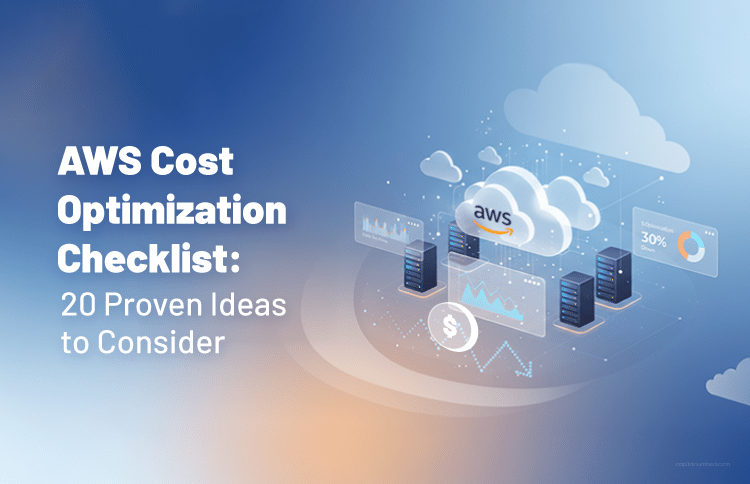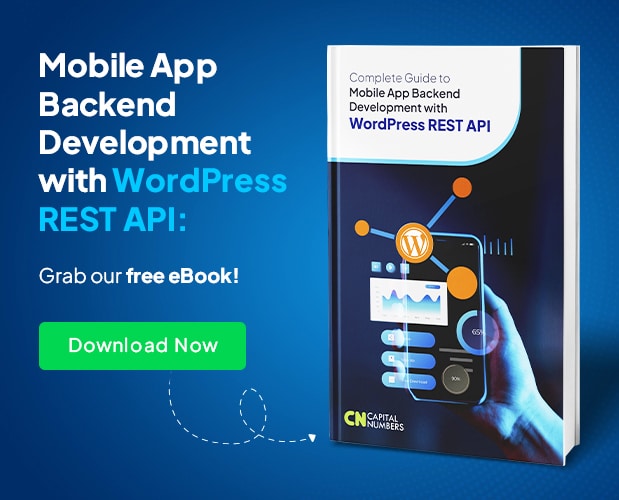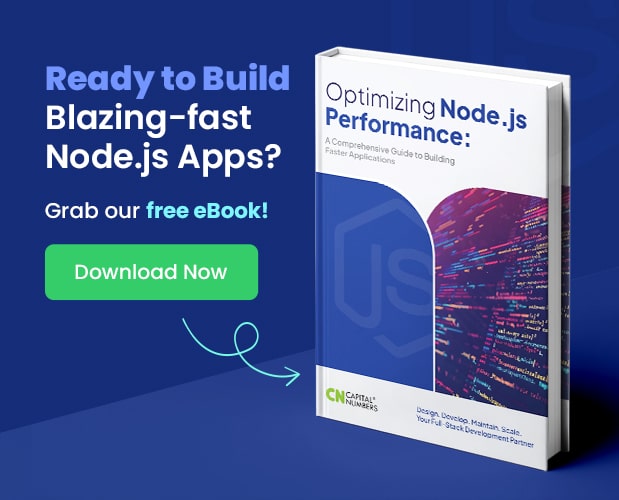REST vs GraphQL: Which Will Power the APIs of Tomorrow?
Table of Contents
APIs are everywhere. They connect apps, share data, and make digital experiences work smoothly – whether you’re ordering food online, tracking a delivery, or scrolling through social media.
When it’s time to build your own API, one question always comes up: REST or GraphQL? REST has been the standard for years – reliable, familiar, and widely supported. GraphQL API is the newer option, known for its flexibility and precision, especially when dealing with complex or changing data.
In this blog, we’ll break down what REST API and GraphQL actually are, how they differ, and where each one shines. More importantly, we’ll help you figure out which approach fits your project best – and how you can even combine both if needed.
Understanding REST and GraphQL in API Development
Before diving into which API style may dominate the future, it’s essential to understand the foundations of REST and GraphQL – two concepts that shape how data is exchanged between clients and servers.
What is REST?
REST (Representational State Transfer) is an architectural style used in API development for designing networked applications. It relies on a stateless, client-server communication model and treats every piece of data as a resource, accessible via a unique URI.
Core Principles:
-
- Statelessness: Each request from the client to the server must contain all the information needed to understand and process it.
- Resource-Based: Data is represented as resources, manipulated using standard HTTP methods, such as GET, POST, PUT, and DELETE.
Benefits of REST:
-
-
- Simplicity and Wide Adoption: REST API is easy to understand and has become the de facto standard for web APIs.
- Easy Caching via HTTP: Built-in support for caching mechanisms improves performance.
- Clear Structure with HTTP Verbs: Operations are intuitive and map directly to CRUD (Create, Read, Update, Delete) actions.
-
Limitations of REST:
-
-
- Over-Fetching and Under-Fetching: Clients often receive either too much or too little data, resulting in inefficiencies.
- Multiple Endpoints for Complex Queries: Fetching related data may require multiple round-trips to different endpoints.
- Versioning Challenges: Evolving APIs often require versioning, which can become messy and hard to maintain.
-
What is GraphQL?
GraphQL, developed by Facebook, is a query language and runtime for API development that allows clients to request exactly the data they need. Unlike REST, a GraphQL API operates over a single endpoint and uses a strongly typed schema to define the shape of data.
Core Concepts:
-
-
- Schema: Defines types and relationships in the GraphQL API.
- Resolvers: Functions that fetch the data for each field in a query.
- Queries and Mutations: Clients send structured queries to retrieve or modify data.
-
Benefits of GraphQL:
-
-
- Precise Data Fetching: Clients control what data they receive, reducing bandwidth usage.
- Single Endpoint for All Queries: Simplifies GraphQL API architecture and reduces complexity.
- Strong Typing and Introspection: Developers can explore the API and validate queries with ease.
- Real-Time Support via Subscriptions: Enables live updates for dynamic applications.
-
Limitations of GraphQL:
-
-
- More Complex Setup and Learning Curve: Requires a deeper understanding of schemas, resolvers, and query structure.
- Caching is Less Straightforward: Traditional HTTP caching doesn’t apply to a GraphQL API; custom solutions are often needed.
- Potential for Overly Complex Queries: Clients can request deeply nested data, which may strain server performance if not managed carefully.
-
This foundational understanding sets the stage for a deeper comparison of REST and GraphQL in terms of performance, scalability, developer experience, and future-readiness. Ready to explore which one might power the APIs of tomorrow? Let’s dig in next.
Seeking Scalable API Solutions for Your Project?
At Capital Numbers, we specialize in API development services that ensure your systems are efficient, secure, and future-ready. Whether you’re considering REST or GraphQL, our team can help you choose and implement the right solution for your business needs. Contact us today.
REST vs GraphQL: Head-to-Head Comparison
In this section, we will compare REST vs GraphQL across various key dimensions, helping you understand which API architecture is better suited for modern apps and the future of API development.
Performance and Efficiency: Which API Works Better?
When it comes to performance and efficiency, the differences between GraphQL vs REST API become immediately visible.
-
-
- REST APIs are typically optimized for predefined requests with fixed responses. However, this often results in over-fetching (getting more data than needed) or under-fetching (not enough data), especially in complex data scenarios. This can result in the inefficient use of network resources and slower performance, particularly in mobile applications or those with limited bandwidth.
- GraphQL APIs, on the other hand, allow clients to request exactly the data they need in a single request. This client-controlled data fetching reduces the problem of over-fetching or under-fetching, making it more efficient, particularly in complex applications with varied data needs. It also helps optimize server and network performance, which is crucial for next-gen applications that demand real-time responsiveness.
-
Flexibility and Scalability: Which API Structure Wins?
In terms of flexibility and scalability, both architectures offer unique advantages in API development:
-
-
- REST API is based on fixed endpoints and HTTP methods. It’s simple and easy to implement, but it lacks flexibility when it comes to handling evolving data structures. As applications scale and become more complex, managing multiple endpoints for related data can quickly become difficult.
- GraphQL uses a single endpoint, which makes it more flexible for handling data. Developers can update or expand the data model without affecting existing clients, making it easier to scale complex applications. This is especially useful for apps that grow quickly or have changing data needs. With GraphQL, APIs can stay flexible while still performing efficiently.
-
Developer Experience and Tooling: Which API Suits You?
REST and GraphQL come with their own set of tools and developer experiences:
-
-
- REST API has been around for a long time, so it has a mature ecosystem with support across many platforms and languages. There are plenty of tools built around REST, making it easy to integrate with existing systems. Most developers familiar with HTTP find it straightforward to use.
- GraphQL API offers a more modern development experience with tools like Apollo and Relay that work well with frontend frameworks. Its schema is self-explanatory, allowing developers to explore and test the API in real-time. This makes API development more flexible and productive, though it can take a bit longer to learn compared to REST.
-
Real-time Data: How REST and GraphQL Handle It?
Real-time data handling is one of the areas where GraphQL shines compared to REST:
-
-
- REST can handle real-time data, but typically requires polling or the implementation of additional technologies like WebSockets for real-time communication. This adds complexity and reduces the overall performance of real-time features.
- GraphQL was built with real-time capabilities in mind. Using subscriptions, it allows clients to receive updates whenever data changes on the server. This makes GraphQL an excellent choice for modern applications, such as social media platforms, messaging apps, or live sports tracking, where real-time updates are crucial.
-
You May Also Read: Real-Time APIs: What They Are and Why They Matter
Security and Error Handling: How REST and GraphQL Tackle It?
When it comes to GraphQL vs REST API in terms of security and error handling, both have their strengths and weaknesses:
-
-
- REST APIs benefit from built-in HTTP security features like SSL/TLS encryption and authentication. Error handling is simple, using HTTP status codes to show if a request succeeded or failed. However, REST can get tricky when managing complex permissions or rate limits across many endpoints.
- GraphQL requires more granular control over security because its flexible queries can expose more data than needed. It’s important to implement proper authorization and validation mechanisms to ensure users can only access what they’re allowed. Error handling is also more complex, as errors are returned within the response and need careful management in your API development workflow.
-
Both REST and GraphQL have clear strengths depending on your project needs. Choosing the right approach depends on the complexity of your data, the need for real-time updates, and the level of flexibility required for modern, scalable applications.
REST vs GraphQL: Which is Better for Modern Apps?
When you’re planning to build a modern app, you might wonder whether to choose REST or GraphQL. The truth is, each has its strengths and fits different scenarios. Understanding where each shines will help you decide the best approach for your app’s needs.
Use Cases for REST:
-
-
- CRUD-heavy applications: REST works best for applications that primarily create, read, update, or delete data, such as inventory systems, content management platforms, or basic dashboards. Its clear endpoint structure makes these operations easy to manage.
- Public APIs with predictable data: If your API delivers consistent, standard responses to many users, REST’s simplicity and stability make it easy to maintain and integrate across different clients.
- Systems requiring strong caching: REST’s reliance on HTTP methods makes caching straightforward, which is great for apps where performance and reducing server load are important.
-
Use Cases for GraphQL:
-
-
- Mobile and single-page apps: GraphQL lets apps request exactly the data they need in one go, cutting down on extra network requests and speeding up performance, especially useful on mobile or slow networks.
- Apps with nested or relational data: For complex data structures, like social feeds, e-commerce catalogs, or dashboards with multiple connected entities – GraphQL can fetch all the required data in a single request, avoiding multiple REST calls.
- Projects needing rapid frontend iteration: When UI changes happen often or teams experiment with new features, GraphQL gives frontend developers the flexibility to request new fields or relationships without waiting for backend updates.
-
Real-Time Car Auction Platform with Robust API Integration
Our team worked with a client who wanted a live car auction platform where bidders could easily access vehicle details, place bids, and enjoy a smooth experience. The biggest challenge was handling third-party auction and dealership APIs, which often had unpredictable formats and strict rate limits.
We built custom APIs and smart data pipelines to make sure data flowed seamlessly, updates happened in real time, and bidders could track live bids without any issue. The platform now handles thousands of users smoothly, making every auction fast, reliable, and enjoyable. [Read the full case study here]
REST vs GraphQL: Comparison at a Glance
| Feature | REST | GraphQL |
|---|---|---|
| Endpoint Structure | Endpoint Structure Multiple endpoints for different resources | Single endpoint for all queries |
| Data Fetching | Fixed responses; can cause over-fetching or under-fetching | Client specifies exactly what data is needed |
| Flexibility | Less flexible; changes may require new endpoints or versioning | Highly flexible; frontend can request new fields without backend changes |
| Real-time Support | Limited; typically requires WebSockets or additional setup | Built-in via subscriptions for real-time updates |
| Caching | Easy to implement via HTTP caching | More complex; requires custom caching strategies |
| Tooling and Ecosystem | Mature ecosystem with extensive platform support | Modern tools like Apollo and Relay; self-descriptive schema |
| Error Handling | Uses HTTP status codes | Errors returned within response; requires careful management |
| Security | Built-in HTTP security features (SSL/TLS, authentication) | Requires granular control with authorization and validation mechanisms |
| Best Use Cases | CRUD-heavy apps, public APIs, systems needing strong caching | Mobile/SPA apps, nested/relational data, rapid frontend iteration |
Can We Use Both REST and GraphQL Over the Same API?
Yes – you can, and in many cases, you should. Using both REST and GraphQL together isn’t just possible; it’s a smart way to strike a balance between stability and flexibility. Instead of choosing one over the other, many teams are blending the two to meet different needs across their applications.
Why Combine REST and GraphQL?
-
-
- Legacy REST systems: If your app already uses REST, you don’t need to throw it out. You can layer GraphQL on top without breaking anything.
- Different use cases: REST is great for simple, predictable operations. GraphQL shines when clients need complex, customizable data.
- Gradual adoption: You can introduce GraphQL API slowly – start with a few endpoints, test it out, and expand as needed.
-
How REST and GraphQL Can Coexist?
You can run both REST and GraphQL side by side on the same backend:
-
-
- Separate routes: REST endpoints typically reside under /api/, while GraphQL endpoints run under /graphql.
- Shared logic: Both can use the same service layer or database, so you’re not duplicating work.
- Unified security: Use the same authentication and authorization system for both.
-
When Does This Setup Make Sense?
-
-
- You’re modernizing an existing REST API but want the flexibility of GraphQL for new features.
- Your frontend teams have different preferences – some prefer REST, while others require GraphQL.
- You’re building a public API and want to offer both options to developers.
-
The Future of API Development
API development is no longer the same. The next generation of API development would be smarter, faster, and more flexible. Here’s what’s shaping the future:
GraphQL Federation and Composable APIs
With GraphQL federation, multiple services can merge their schemas into a single, unified API. This makes it easier to scale large applications while keeping everything modular and maintainable. Composable APIs take this further – developers can assemble endpoints from reusable building blocks, speeding up integration and iteration.
Real-Time APIs and Event-Driven Architecture
Users expect instant updates. Real-time APIs powered by event-driven architectures let applications react the moment data changes – think live dashboards, chat apps, or collaborative tools. Technologies like GraphQL subscriptions, WebSockets, and server-sent events make this seamless.
AI-Generated APIs and Schema-First Design
AI is starting to help build APIs themselves – automating endpoint creation, validating data, or suggesting optimizations. Pair this with schema-first design, where the API structure is defined upfront, and you get faster development, fewer errors, and APIs that are easier to consume.
Edge-Native API Management and Observability
Edge computing is bringing APIs closer to users, cutting latency and boosting performance. Edge-native API management handles routing, security, and caching at the edge, while observability tools give real-time insights to ensure reliability and efficiency.
APIs are no longer just “data pipes.” The future is about intelligence, flexibility, and speed – APIs that adapt, scale, and respond in real-time to power the next generation of applications.
You May Also Read: 7 Game-Changing Tips to 10x Your API Performance
Bottom Line
Choosing between REST and GraphQL API doesn’t have to be an either-or decision. REST remains reliable, simple, and ideal for predictable, CRUD-heavy operations, while GraphQL offers flexibility, precise data fetching, and real-time capabilities for modern, dynamic apps. Understanding their strengths and limitations helps you pick the right tool – or even combine both – to meet your application’s needs.
The future of APIs is real-time, intelligent, and flexible, with innovations such as GraphQL federation, AI-generated schemas, and edge-native management driving faster, more scalable, and more responsive applications.
The question isn’t just which API to use – it’s how your API can power the next generation of experiences.
Why Choose Capital Numbers for API Development Services?
Building modern APIs – whether REST, GraphQL, or a hybrid approach – requires deep technical expertise and a clear understanding of your business needs. At Capital Numbers, we specialize in designing and delivering APIs that are efficient, scalable, and future-ready.
Expert API Team: Our developers have hands-on experience with REST, GraphQL, and real-time API solutions. We create robust, secure, and flexible APIs that integrate seamlessly with your apps and systems.
End-to-End Development: From designing API architecture to implementing endpoints, handling authentication, and ensuring smooth integration with frontend and backend systems, we provide a complete, end-to-end solution.
Proven Track Record: We’ve successfully delivered API solutions for over 250 global clients, helping businesses streamline data flow, improve performance, and accelerate innovation.
Flexible Engagement Models: Choose what works best for you – fixed cost, staff augmentation, or agile pods – so you get the right support at the right scale.
Ready to power your apps with next-generation APIs? Schedule a consultation today!


















